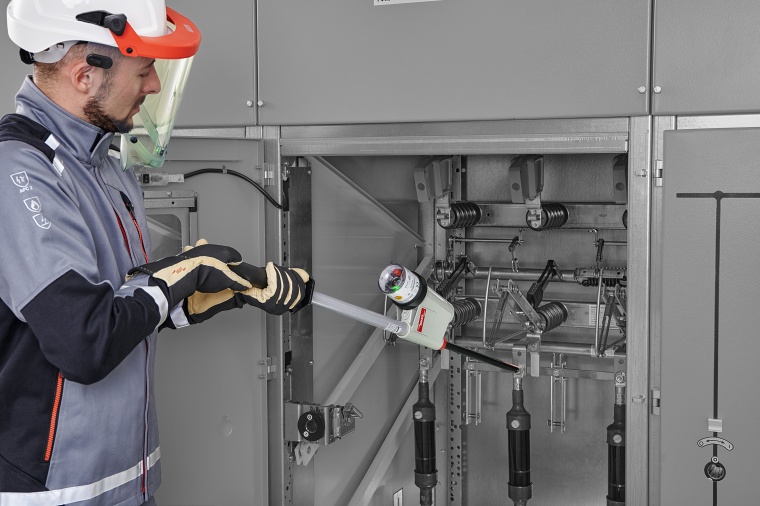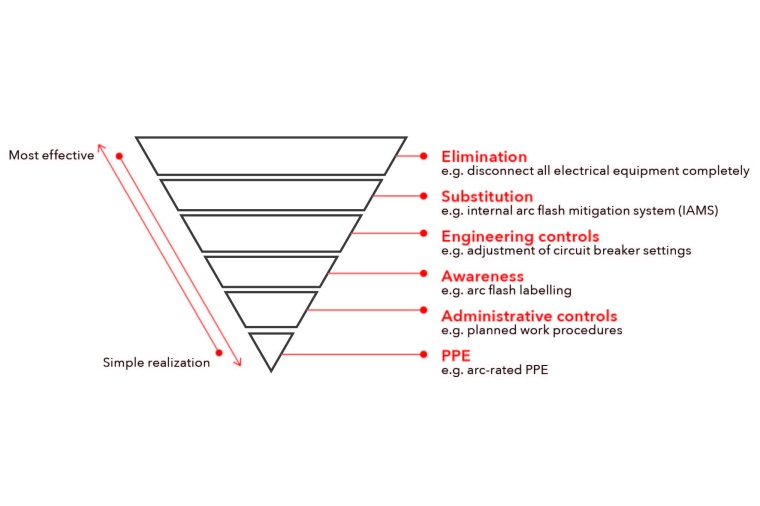Preventing Arc Faults in Electrical Installations
“A gas discharge between two electrodes!” This is the definition of an electric arc. If an arc like this occurs in an environment involving high energies, an enormously hot plasma with extremely strong luminosity is created through which current flows continuously. The arc also creates a massive pressure wave that results in a loud bang. This undesirable occurrence in electrical installations is correspondingly dangerous. It is referred to in this context as an arc fault. In addition to the significant damage that such arc faults can cause in the affected installations themselves, they also pose a direct threat to the life and limb of everyone who carries out their work in environments of this nature. As a specialist for electrical occupational safety, Dehn assists in creating a comprehensive arc fault protection concept to ensure better protection for people and installations.



GIT SECURITY asked Lutz Graumann, Global Account Manager for Arc Fault Protection at Dehn SE, for an interview.
GIT SECURITY: Mr. Graumann, what leads to the formation of an arc fault, for example, in a switchgear installation? And what can the consequences be?
Lutz Graumann: Accidents frequently occur due to human error, such as when employees work on switchgear installations that are still energised. The danger involved here is often underestimated, especially in the low-voltage range. If, for example, an uninsulated tool is dropped during work in this context, or other metallic parts get into live areas of the switchgear installation, a short-circuit with subsequent arcing can occur.
People who are in the immediate vicinity of this hazard zone are then put at great risk. An arc fault behaves much like an explosion. The effects cause burns and can lead to irreversible harm and even death.
What are the application areas in which protection against arc faults must be taken into account and what are the requirements?
Lutz Graumann: In most countries, directives and requirements are defined to minimise health and occupational risks in the workplace. In the United States, for example, this is done by the Occupational Safety and Health Administration, OSHA for short. The standard NFPA 70E lists classes of personal protective equipment against arc faults. Selection can be based on the calculation method found in IEEE 1584. It is important to assess the hazard involved in performing electrical work before selecting the personal protective equipment against the thermal effects of an electric arc fault. This means that a risk assessment must be carried out in advance for all types of work.
Every qualified specialist responsible for occupational safety in a company should be familiar with these requirements for the protection of staff. If something happens, you are liable if adequate protection measures were not defined in advance.
In what order should protection measures be taken in light of the Hierarchy of Risk Control?
Lutz Graumann: The “Hierarchy of Risk Control” is a general procedure that is used for the protection of persons in the event of arc-flash hazards. When it comes to the protection of employees, the company must always assess the possible hazards for the individual that are associated with all work on electrical installations and take suitable protection measures. The highest priority here is always the complete avoidance of hazards. Complete disconnection of an electrical installation is one possible measure. If a disconnection is not possible, the danger must be reduced – i. e. through substitution. The final step for avoiding the residual risk is to define the personal protection measures, such as appropriate PPE against the thermal effects of an electric arc fault.
What about specific protection measures, for example for substitution, and what solutions does Dehn offer for this in concrete terms?
Lutz Graumann: For substitution in the low-voltage range, Dehn offers the active arc fault mitigation system, Dehnshort. It protects both people and the switchgear installation itself from the effects of the arc. The arc fault is detected by sensors in the protective system the moment it occurs and is quenched within milliseconds. The great danger an arc fault entails is reduced to a minimum when it is quickly quenched – i. e. substituted.
Can we go into a bit more detail here? How does Dehnshort recognise that an arc fault is occurring and how is it quenched?
Lutz Graumann: Explaining the detection is quite easy – explaining the quenching is more difficult. An arc fault emits a very bright light, which the Dehnshort arc fault mitigation system detects using special light sensors. In addition to the light, it also monitors the current. When both information sources (current and light) provide a trigger simultaneously, the system reacts to the electric arc within milliseconds.
This quenching doesn’t take place with an extinguishing agent as with a fire extinguisher. A special type of switchgear device is used for quenching that creates a short-circuit at the point where the arc fault is burning. The system transforms this dangerous, almost uncontrollable event known as an “electric arc” into a controllable short-circuit. The “electric arc” is quenched within 2-4 milliseconds.

You also offer training, but what exactly do you teach?
Lutz Graumann: Dehn offers comprehensive protection against arc faults with Dehnarx. This includes training courses. It is important to constantly sensitise electrically skilled persons to the hazards that can arise during electrical accidents: specifically, electric shock or arc faults.
The most important measure that must be implemented on switchgear installations is that of the five safety rules. These five rules constitute basic knowledge for every electrically trained specialist. Training courses, which can be described as Administrative Controls, address not only the procedure for the safety rules but also the use and regular inspection of the protective and auxiliary equipment.
Another measure is to display the results of an arc-flash hazard assessment directly on the installation. With electrical installations, the danger is not always apparent from the outside. In addition to calculating arc flash energies, the Dehnarx service also offers the provision of arc flash labels. This is referred to as Awareness. Labels show the electrically skilled person simply and clearly where the hazards of the respective installation lie and indicate the necessary protection measures.
Personal protection measures, i. e. PPE against the thermal effects of an electric arc fault, are the last step. What matters most about PPE against the thermal effects of an electric arc fault and what should be considered when selecting it?
Lutz Graumann: The right personal protective equipment against the thermal effects of an electric arc fault with protective functions and a protection class suitable for the respective workplace should always be available. The previously mentioned NFPA 70E and IEEE 1584 documents provide assistance with this. The IEEE 1584 standard describes the procedure for a hazard assessment with respect to the thermal effects of an arc flash. The IEEE 1584 document is useful for determining the energy values involved so that the appropriate protection class can be selected for the PPE against arc faults. A clarification should take place with the responsible electrically skilled person as to how up-to-date the risk assessment is and whether there is a need for action. A check list can assist with this.
Nowadays, when selecting protective clothing, companies not only have the protective function of the PPE in mind, but also its visual effect. A modern, sporty design for a protective garment increases the wearing comfort and improves the willingness of employees to wear the personal protective equipment.
What does Dehn offer its customers when it comes specifically to equipping people with PPE against the thermal effects of an electric arc fault?
Lutz Graumann: Dehn offers a portfolio of PPE against arc faults that includes different protection classes. Special attention is also given to the wearing comfort of the protective clothing. Lightweight materials and an anatomical cut are essential. In addition to standard sizes, there are also long and short sizes and a women's collection. Our PPE against electric arc faults can be tested without obligation to facilitate finding the right size for each employee.
Business Partner
Dehn SEHans-Dehn-Str. 1
92318 Neumarkt
Germany
most read


Is Your Venue Ready for Martyn’s Law?
Martyn’s Law demands stronger security by 2027. Is your venue prepared to protect and respond?

The Benefits of AI-based Video Surveillance Solutions for Sports Venues
Dallmeier Interview: Artificial intelligence Makes Stadiums Smarter

Security management, building security & perimeter protection: the winners of category E at the GIT SECURITY AWARD 2026
GIT SECURITY AWARD 2026: Security management, building security & perimeter protection - an overview of the most innovative solutions

Video security & video management: the winners of category C at the GIT SECURITY AWARD 2026
GIT SECURITY AWARD 2026: Video Security & Video Management - an overview of the most innovative solutions








